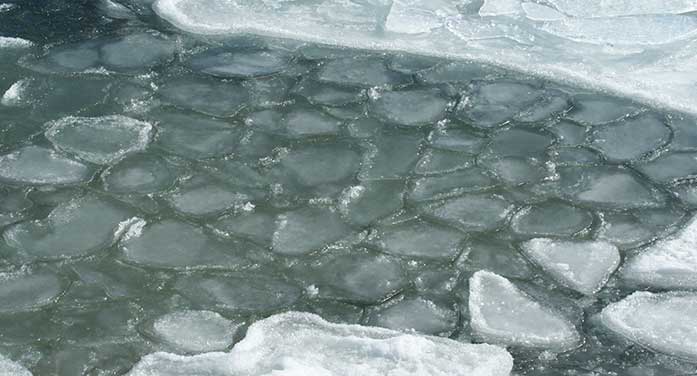 As we look out our windows, it’s hard to imagine that spring is officially only a few short weeks away. Will the snow and cold ever relent so the birds and blooms can dominate the landscape again?
As we look out our windows, it’s hard to imagine that spring is officially only a few short weeks away. Will the snow and cold ever relent so the birds and blooms can dominate the landscape again?
You might be surprised to know that ‘recovery’ from the blasts of winter is well underway. Let’s explore a few examples.
In January, just outside my front door, a woolly bear caterpillar (the moth of the Isabella tiger moth) ambled along, seemingly oblivious to the freezing temperature. A couple of days later, it was there again. But why and how is this even possible?
A few insects that live in cold climes have developed the ability to offset ice formation within their tissues. They survive because of a natural antifreeze they create. This antifreeze prevents the formation of damaging ice crystals in the tissues and circulatory systems, allowing the insects to survive until they thaw when temperatures rise.
The woolly bear caterpillar and many other Canadian insects are well known for this survival technique. A leaf-footed bug showed up on my window recently, emerging when the temperatures climbed above freezing for a few days.
On the surface of the snow, it’s easy to find snow fleas at this time of year. These tiny thrips (not actually a flea at all) are an important early spring source of protein for many animals as they emerge in the millions. So all around us everything is ready to act once the conditions improve.
Are these dangerous forays or opportunistic outings?
Likely the latter, although there’s a huge risk if you’re an insect or cold-blooded creature coming out too soon.
In the bird community, it’s easy to go out and hear cardinals and chickadees belting out their spring songs, even on the coldest days. Today a junco sang its spring song. Red-tailed hawks are starting their return from the near south and are often seen sitting in a tree side-by-side at this time of year. Some will nest locally but others will continue their migration as a pair.

Ice on Amherst Island, Lake Ontario slowly breaks apart, yielding to oncoming spring
The Canada jays and great horned owls have already started their nesting cycle, as have the white-winged crossbills seen carrying nesting material in Algonquin Park in Ontario last week.
Horned Larks, absent all winter, are already back in good numbers, and a few have even started to test their vocals as they forage in the snowy fields.
The forests are already ringing with the staccato drumming of hairy, downy and pileated woodpeckers as they claim territories and search for their mates.
The squirrels around my house have been frisky for a while now. Copulation is frequent as the males and females pair off to ensure a new generation is ready to ravage my bird feeders.
Even the trees and plants are reacting. Ever notice how the buds on trees are more evident this time of year?
The trees have been in a state of dormancy for weeks. Native Canadian trees need to go through a prolonged period of exposure to low temperatures (i.e., 5C to 10C) so the new growth can develop in the spring. They have adapted such that they’re in sync with the annual temperature cycles in their geographic area.
They can withstand freezes and thaws because the timing of bud break is controlled mostly by the amount of daylight and, to a lesser degree, by the ambient temperature. In the spring, the growth is reactivated when the environment stimulates the plant as conditions are again suitable for growth.
All around, life is slowly coming back, ready to reclaim the landscape as soon as conditions permit. The response is slow and subtle, but nature knows what needs to be done and she will move at her own pace, guiding the flora and fauna to ensure another season of growth and procreation will be successful.
All around us, creatures are ready for the inevitable changes that will soon dominate the fields and forests. So don’t fear; it’s happening right now – a bit subtly, but happening nonetheless.
Geoff Carpentier is a published author, expedition guide and environmental consultant. Visit Geoff on LinkedIn, Instagram and Facebook. For interview requests, click here.
The opinions expressed by our columnists and contributors are theirs alone and do not inherently or expressly reflect the views of our publication.
© Troy Media
Troy Media is an editorial content provider to media outlets and its own hosted community news outlets across Canada.

